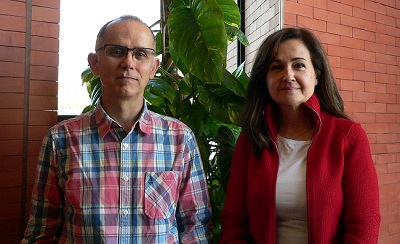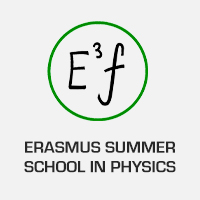The black pigments used in the shelter of Les Dogues (Ares del Maestrat) during the Neolithic contain charcoal, discovered from the fragmented plant cells of conifers and angiosperms. This is the main conclusion of a study published in the magazine PLOS ONE by University of Valencia professors Clodoaldo Roldán, Ernestina Badal, Sonia Murcia and Valentín Villaverde, and by Esther López (Centre National de la Recherche Scientifique de France-CNRS ).

Through a paleobotanical analysis, which had never been used before, it was possible to identify the plant cells of angiosperms and conifers, and to detail the process by which they were transformed for use as pigments. These cells were highly fragmented and obstructed by an agglutinating substance, indicating an intense mechanical transformation process by which a fine powder was produced.
It was later mixed with a substance that has not been identified, although it is believed to be animal or vegetable fat, with which they obtained a sufficiently gelatinous mixture for the pigment to agglutinate. The article notes that due to the degraded state of the pigment, it is impossible to identify the precise nature of the binder, which may have led past research to discover or explain the existence of a binder.
The research brings a new experimental methodology to the sector, the operational chains, with the aim of, in addition to determining the composition of the pigment, finding out the technical process of making the paints. In this way, using charcoal from the identified species and using tools like those used by Neolithic men and women, such as a mace and a mortar, the research team has been able to reproduce the possible range of pigments that they used.
In the absence of confirming the nature of the binder, it has been possible to recreate the possible recipes of the Neolithic paintings. Thus, the cove of Les Dogues has two different graphic styles, which indicate a whole period of time, imprecise, of transmission and reproduction of the techniques of making pigments.
L’objectiu de recrear aquestes tècniques radica en documentar els processos de fabricació per a acostar-se a com s’ha produït la transmissió del coneixement en les societats neolítiques. Fins fa poc, els pigments negres analitzats en l’àrea de la Valltorta indiquen que van ser elaborats a base de manganés. No obstant, en l’àrea de Gassulla, dins del mateix parc cultural, i àrea a la qual pertany l’abric de Les Dogues, tots els pigments negres analitzats per l’equip investigador estan fets a base de carbó vegetal. Aquest descobriment ha estat possible gràcies a la combinació dels anàlisis elementals mitjanant l’espectroscòpia EDXRF, que han descartat la presència de manganés, i l’anàlisi microscòpic Raman, que ha confirmat la presència del carbó vegetal.
The aim of recreating these techniques lies in documenting the manufacturing processes to get closer to how the transmission of knowledge took place in Neolithic societies. Until recently, the black pigments analysed in the Valltorta area indicate that they were made from manganese. However, in the Gassulla area, within the same cultural park, and area to which the Les Dogues cove belongs, all the black pigments analysed by the research team are made from charcoal. This discovery was made possible thanks to the combination of elemental analyses using EDXRF spectroscopy, which ruled out the presence of manganese, and microscopic Raman analysis, which confirmed the presence of charcoal.
This is explained in the article "Identification of plant cells in black pigments of prehistoric Spanish Levantine rock art by means of a multi-analytical approach. A new method for social identity materialisation using chaîne opératoire", published in the journal PLOS ONE by Clodoaldo Roldán, Ernestina Badal, Sonia Murcia and Valentín Villaverde, professors at the University of Valencia, and by Esther López, from the Center National de la Recherche Scientist from France. It is a research framed in the "NEOSOCWESTMED" project of the European Union, which is financed through funds for the Marie Curie Actions.
The cells that have been identified belong to conifers and angiosperms, but their features are common to much of the vegetation typical of the Levantine Neolithic, such as the arboç, the mastic, the walnut, the buckthorn, the plum or the cherry tree But it is difficult to specify the varieties more. The article details the experimental manufacture of pigments from different combinations of charcoal obtained from the aforementioned vegetation and different binders. In this way, it has been tried to revive the technique to check the methodology that was practicable in the Neolithic, and the contrasted results offer similar pigmentation results.
Mineral raw materials
The binders that were used "are difficult to detect with the techniques used, which is why it had been thought that the Levantine pigments were made by a simple mixture of mineral raw materials, such as hematite or manganese, in water" the team pointed out. In addition, they point out: "for a long time, attempts have been made to analyze the binders with a multitude of techniques, above all by chromatography, and it has not been possible to identify them, not so much because of the capacity of these techniques, but because the organic matter is too degraded". They all agree to emphasise that the multidisciplinary approach applied to this research – physicochemical analysis, archaeobotanics and experimental archeology – is the key element that has allowed these barriers to be overcome.
Article:
López-Montalvo E, Roldán C, Badal E, Murcia-Mascarós S, Villaverde V (2017) «Identification of plant cells in black pigments of prehistoric Spanish Levantine rock art by means of a multi-analytical approach. A new method for social identity materialization using chaîne opératoire». PLOS ONE 12(2): e0172225. doi: 10.1371/journal.pone.0172225


























